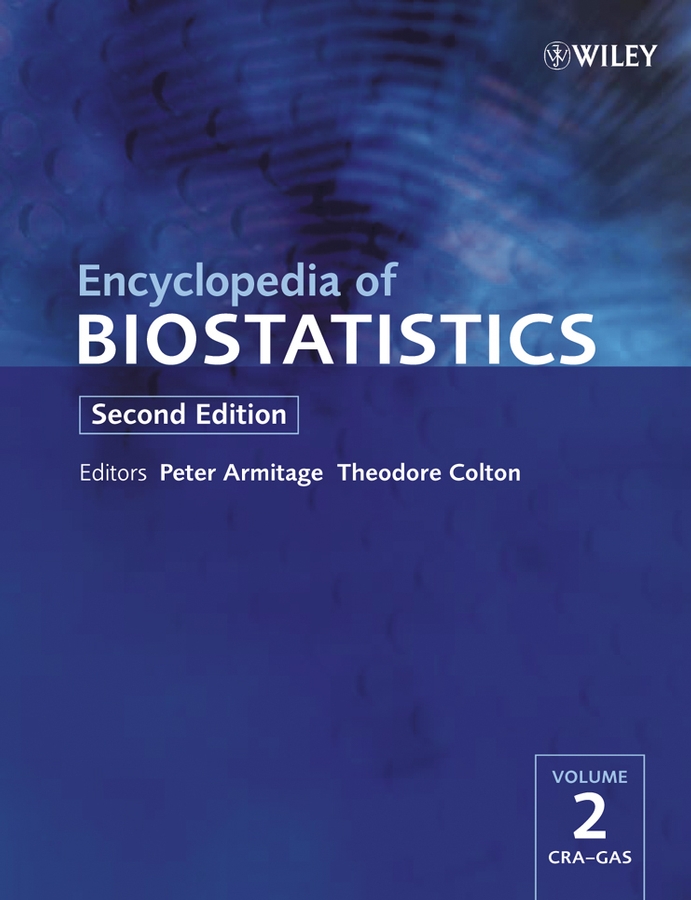Abstract
A system is chaotic if it is governed by a set of deterministic equations, but displays erratic, apparently random, behavior. The mathematical structure may be the iteration of linked difference equations in discrete time, or the evolution of a set of linked differential equations in continuous time. Stochastic interpretations, especially those involving time series analysis, are described.
References
- 1 Babloyantz, A. (1988). Is the normal heart a periodic oscillator?, Biological Cybernetics 58, 203–211.
- 2 Babloyantz, A. (1991). Predictability of human EEG—a dynamic approach, Biological Cybernetics 64, 381–391.
- 3 Bartlett, M. S. (1990). Chance or chaos? (with discussion), Journal of the Royal Statistical Society, Series A 153, 321–347.
- 4 Berliner, L. M. (1991). Likelihood and Bayesian prediction of chaotic systems, Journal of the American Statistical Association 86, 938–952.
- 5
Berliner, L. M.
(1992).
Statistics, probability and chaos (with discussion),
Statistical Science
7,
69–90.
10.1214/ss/1177011444 Google Scholar
- 6 Brock, W. A., Dechert, W. D. & Scheinkman, J. A. (1986). A test for independence based on the correlation integral, Technical Report. University of Wisconsin, Madison.
- 7
Chatterjee, S. &
Yilmaz, M. R.
(1992).
Chaos, fractals and statistics (with discussion),
Statistical Science
7,
49–68.
10.1214/ss/1177011443 Google Scholar
- 8 Cutler, C. D. (1994). A theory of correlation dimension for stationary time series (with discussion), Philosophical Transactions of the Royal Society of London, Series A 348, 343–355.
- 9 Davies, S. & Hall, P. (1998). Fractal analysis of surface roughness using spatial data, Journal of the Royal Statistical Society, Series B, to appear.
- 10 Ehrenfest, P. (1912). The conceptual foundations of the statistical approach in mechanics, in Encyclopedia of Mathematical Sciences (in German). English translation by M. J. Moravcsik. Dover, New York (1959).
- 11 Falconer, K. (1990). Fractal Geometry: Mathematical Foundations and Applications. Wiley, Chichester.
- 12 Geweke, J. (1993). Inference and forecasting for chaotic non-linear time series, in Non-linear Dynamics and Evolutionary Economics, P. Chen & R. Day, eds. Oxford University Press, Oxford.
- 13 Grassberger, P. & Procaccia, I. (1983). Characterization of strange attractors, Physics Review Letters 50, 346–349.
- 14 Grenfell, B. T. (1992). Chance and chaos in measles dynamics (with discussion), Journal of the Royal Statistics Society, Series B 54, 383–398.
- 15 Hall, P. & Wolff, R. C. L. (1995). Properties of invariant distributions and Lyapunov exponents for chaotic logistic maps, Journal of the Royal Statistical Society, Series B 57, 439–452.
- 16 Jones, D. A. (1978). Nonlinear autoregressive processes, Proceedings of the Royal Society of London, Series A 360, 71–95.
- 17 May, R. M. (1975). Biological populations obeying difference equations: stable points, stable cycles and chaos, Journal of Theoretical Biology 51, 511–524.
- 18 Nychka, D., Ellner, S., McCaffrey, D. & Gallant, A. R. (1992). Finding chaos in noisy systems (with discussion), Journal of the Royal Statistical Society, Series B 54, 399–426.
- 19
Poincaré, H.
(1885).
Sur l'équilibre d'une masse fluide animée d'un mouvement de rotation,
Acta Mathematica
7,
259–380.
10.1007/BF02402204 Google Scholar
- 20 Schaffer, W. M. (1985). Can non-linear dynamics elucidate mechanisms in ecology and epidemiology?, IMA Journal of Mathematics with Applications in Medicine and Biology 2, 221–252.
- 21
Smith, R. L.
(1992).
Estimating dimension in noisy chaotic time series (with discussion),
Journal of the Royal Statistical Society, Series B
54,
329–351.
10.1111/j.2517-6161.1992.tb01885.x Google Scholar
- 22
Sparrow, C.
(1982).
The Lorenz Equations: Bifurcations, Chaos and Strange Attractors.
Springer-Verlag,
New York.
10.1007/978-1-4612-5767-7 Google Scholar
- 23 Sugihara, G. & May, R. M. (1990). Non-linear forecasting as a way of distinguishing chaos from measurement error in a time series, Nature 344, 734–741.
- 24
Tong, H.
(1990).
Non-linear Time Series: A Dynamical Systems Approach.
Oxford University Press,
Oxford.
10.1093/oso/9780198522249.001.0001 Google Scholar
- 25 Tong, H. & Lim, K. (1980). Threshold autoregression, limit cycles and cyclical data (with discussion), Journal of the Royal Statistical Society, Series B 42, 245–292.
- 26 Tong, H. & Smith, R. L., eds (1992). Royal Statistical Society Meeting on Chaos, Journal of the Royal Statistical Society, Series B 54, 301–474.
- 27 Wolff, R. C. L. (1990). A note on the behavior of the correlation integral in the presence of a time series, Biometrika 77, 689–697.
- 28 Wolff, R. C. L. (1992). Local Lyapunov exponents: looking closely at chaos (with discussion), Journal of the Royal Statistical Society, Series B 54, 353–371.
- 29 Wolff, R. C. L. (1994). Independence in time series: another look at the BDS test (with discussion), Philosophical Transactions of the Royal Society of London, Series A 348, 383–395.
- 30 Yao, Q. & Tong, H. (1992). Quantifying the influence of initial values on non-linear prediction, Journal of the Royal Statistical Society, Series B 56, 701–725.
- 31 Yao, Q. & Tong, H. (1994). On prediction and chaos in stochastic systems (with discussion), Philosophical Transactions of the Royal Society of London, Series A 348, 357–369.



